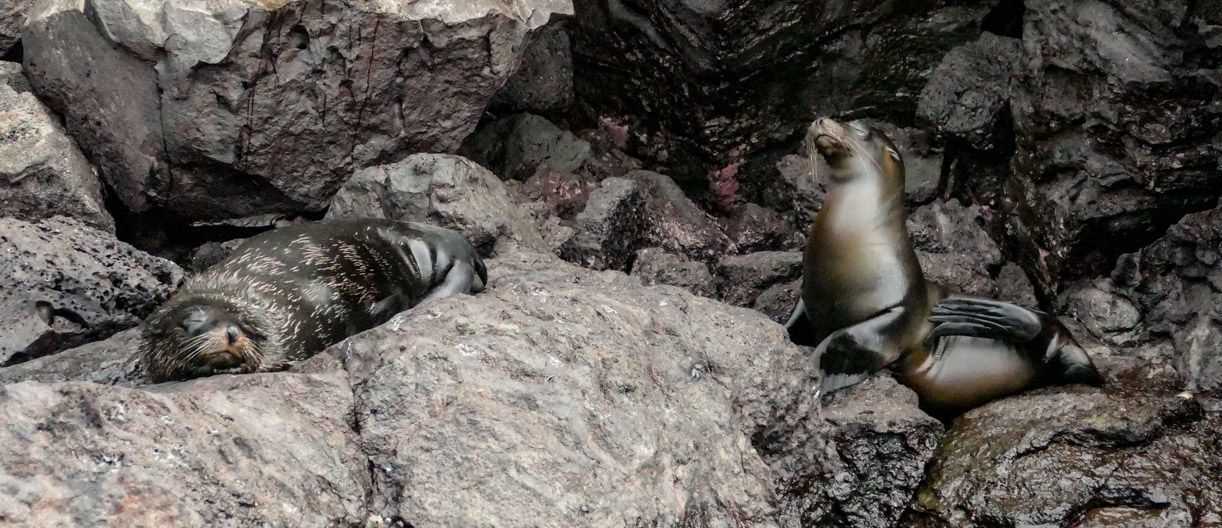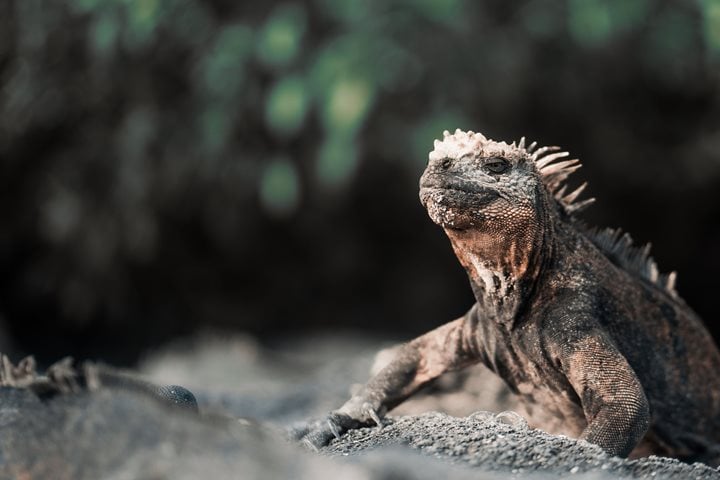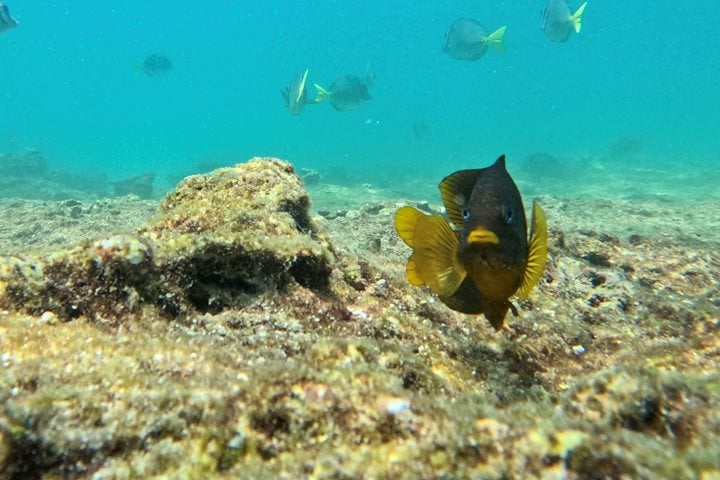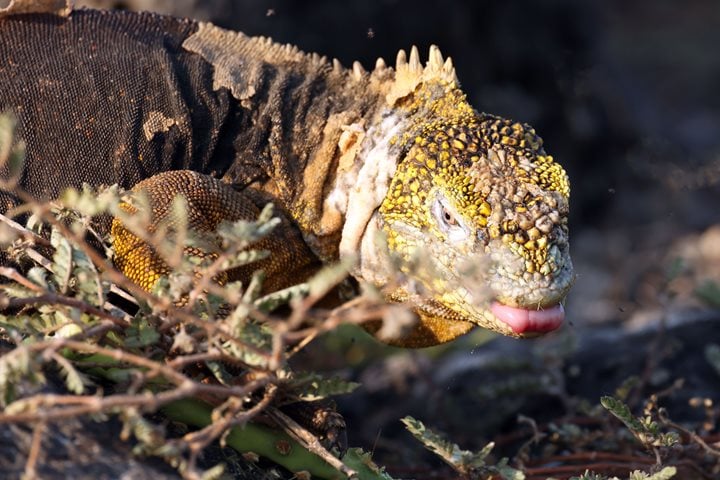When we woke up, already anchored in the bay of Genovesa Island, the sky looked overcast, a little dull to tell the truth. But as the minutes went by, it became clearer and clearer, sunnier and sunnier. The early birds went out on the last kayak and paddleboard outing, our fourth of the trip! In calm waters, at the inside base of a crater wall, great frigate birds and red-footed boobies perched on branches overhanging the sea.
The courtship season of frigates has begun, and the warbling “woo-woo” sounds reverberate around the bay. A new-born – and I mean NEW-born sea lion pup fascinated everyone. How often does one ever get to witness, and at such close range, the birth of a wild animal?
When the morning got too hot, it was time to get wet. Some folks chose to stay at the beach to swim and snorkel, while others chose to go deep-water snorkeling along the crater walls across the bay. Genovesa is located in the very northeast corner of the archipelago. As such, the warmer waters of the Panama current influence Genovesa more than the other islands we have visited so far; I measured the temperature at 81 degrees Fahrenheit! No wetsuit needed today, even if you do live in Florida!
The afternoon was dedicated to exploring a landing site known as “Prince Philip’s Steps”. To get there, one has to ride in Zodiacs a mile across the bay. On arrival, the 80-foot bluff rises up vertically. But no! A crevice opens up; a fissure angles in.
At the base of the cliff, a small colony of Galapagos fur seals reside. We were fortunate enough to find a young Galapagos sea lion – about 2 years old, on a rock right next to an adult Galapagos fur seal. Perfect conditions for a bit of comparison between two completely different genera of marine mammals.
Prince Philip was a long-time honorary member of the Charles Darwin Foundation, and explored the islands when they were first recognized and protected by Ecuadorian law. With a bit of concrete and a few wooden handrails, you can reach the top to find an ethereal world of noisy Nazca boobies, calling frigates and honking red-footed boobies. Its level trail is placed over uneven slabs of old pa-hoe-hoe lava, tilted drunkenly and cracked, opening holes here and there. Nazca boobies dominate the scene, while red-foots play a supporting role in the trees. Galapagos storm petrels flit over the lava crust, hoping to avoid the attention of hiding short-eared owls. One owl caught a storm-petrel, other owls waited in the distance.
The trail finally takes you to a view looking out at the East Pacific Ocean – looking south. If we could, the central islands of the Galapagos Archipelago might be seen from here – but no – as its 50 nautical miles away with hazy conditions most of the time…it seems there is nothing more out there. You are alone, on an island of birds.









